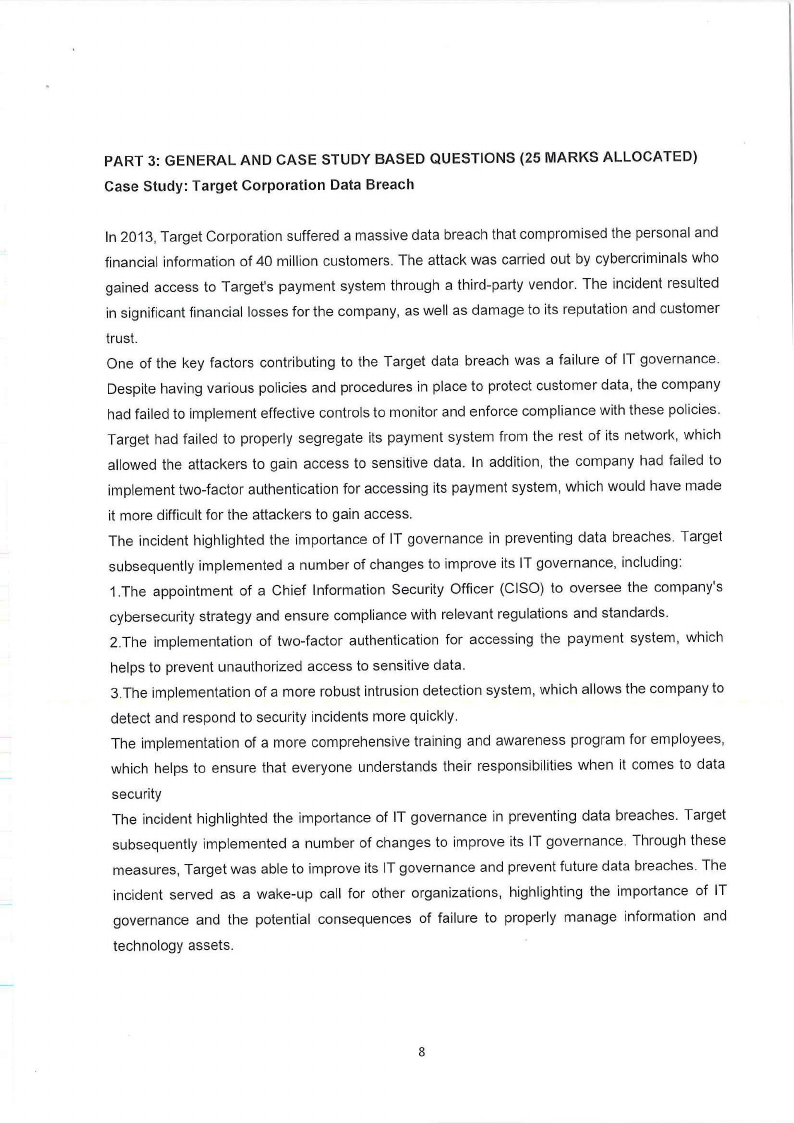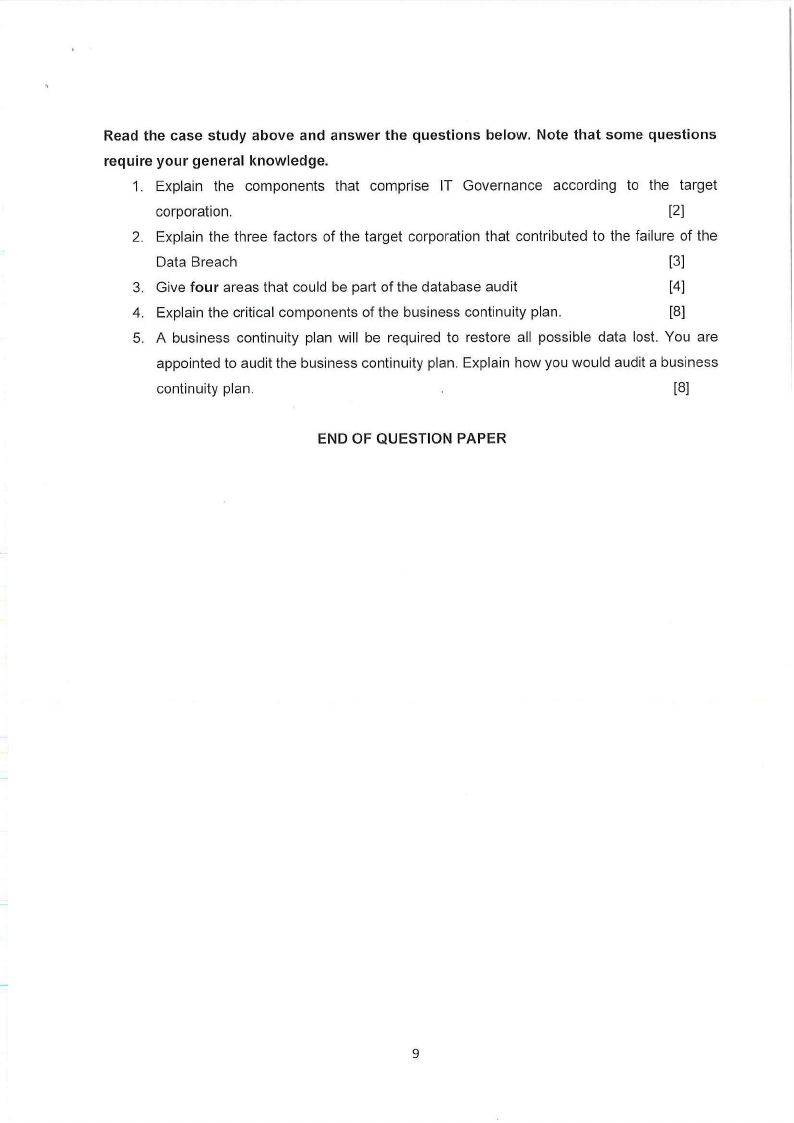
PART 3: GENERAL AND CASE STUDY BASED QUESTIONS (25 MARKS ALLOCATED)
Case Study: Target Corporation Data Breach
In 2013, Target Corporation suffered a massive data breach that compromised the personal and
financial information of 40 million customers. The attack was carried out by cybercriminals who
gained access to Target's payment system through a third-party vendor. The incident resulted
in significant financial losses for the company, as well as damage to its reputation and customer
trust.
One of the key factors contributing to the Target data breach was a failure of IT governance.
Despite having various policies and procedures in place to protect customer data, the company
had failed to implement effective controls to monitor and enforce compliance with these policies.
Target had failed to properly segregate its payment system from the rest of its network, which
allowed the attackers to gain access to sensitive data. In addition, the company had failed to
implement two-factor authentication for accessing its payment system, which would have made
it more difficult for the attackers to gain access.
The incident highlighted the importance of IT governance in preventing data breaches. Target
subsequently implemented a number of changes to improve its IT governance, including:
1.The appointment of a Chief Information Security Officer (CISO) to oversee the company's
cybersecurity strategy and ensure compliance with relevant regulations and standards.
2.The implementation of two-factor authentication for accessing the payment system, which
helps to prevent unauthorized access to sensitive data.
3.The implementation of a more robust intrusion detection system, which allows the company to
detect and respond to security incidents more quickly.
The implementation of a more comprehensive training and awareness program for employees,
which helps to ensure that everyone understands their responsibilities when it comes to data
security
The incident highlighted the importance of IT governance in preventing data breaches. Target
subsequently implemented a number of changes to improve its IT governance. Through these
measures, Target was able to improve its IT governance and prevent future data breaches. The
incident served as a wake-up call for other organizations, highlighting the importance of IT
governance and the potential consequences of failure to properly manage information and
technology assets.
8
























